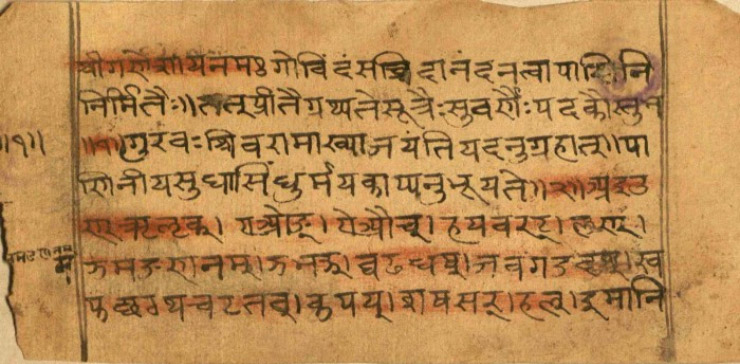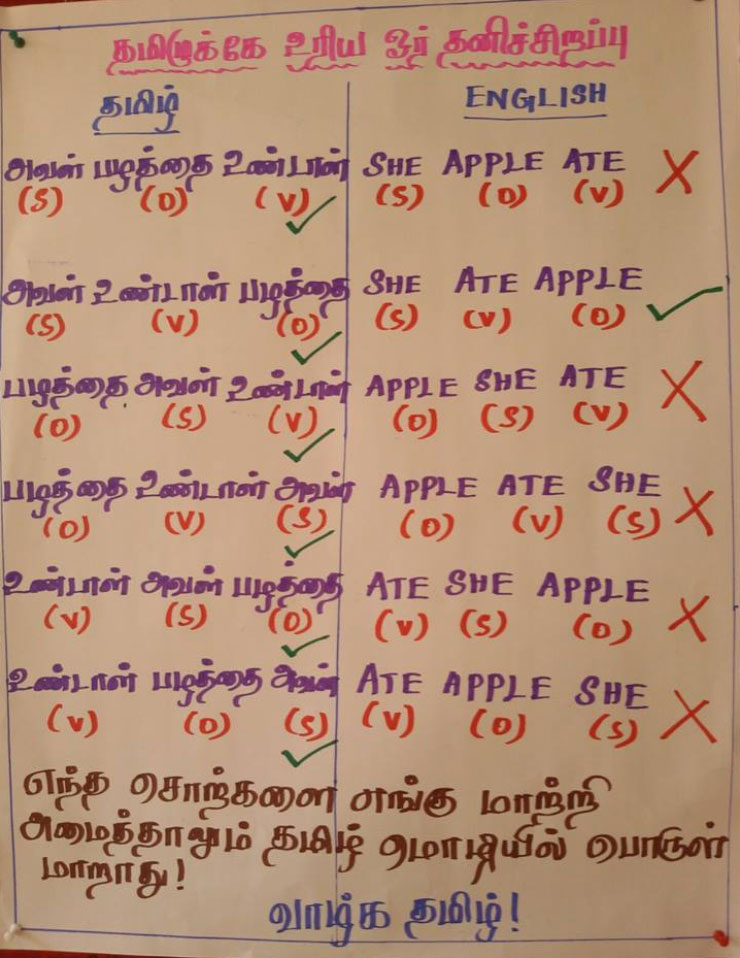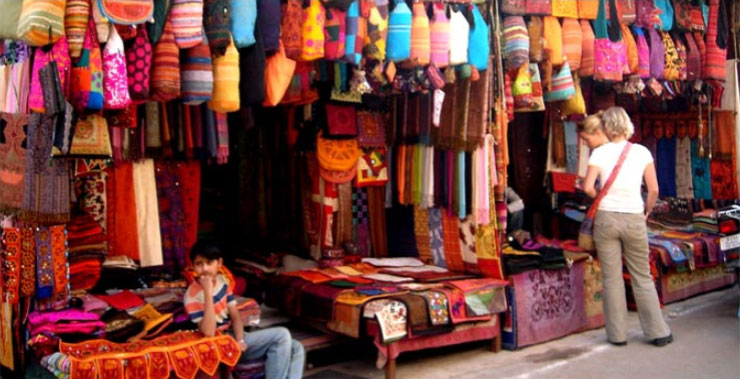What Do Indians Speak and Why Can They Speak Multiple Languages Like a Dream?
What do Indians speak? Why can they often speak several languages? And speak them well?
Picture India in your mind’s eye and you will most likely see the following:
Lots of colour. Narrow lanes. Unimaginable traffic. Spicy food. Thousands of cuisines. Seven-star hotels. Slums next to them. Religious processions. Stunningly beautiful temples. Sweltering heat. Mind-blowing history. Over 500 languages. Yoga.
Beneath all this colour and noise, India hides an unquestioned acceptance of the amalgamation of thousands of mini-cultures. India quietly and unassumingly uses her languages as a mega-unifier of her people!
India can really blow your mind in a lot of ways. Understanding her rich heritage of languages could be just one step in getting closer to admiring this truly amazing land.
So how come most people in India speak multiple languages? What’s their secret?
Let’s take a look at what makes it easy for Indians to be multilingual.
Table of contents
- What Do Indians Speak? Each State has its Own Language
- Two of the World’s Oldest Written Languages Are from India
- Most Languages in India Follow the WYSIWYG Premise
- Indian Languages Are Highly Versatile
- Many English Words Are Borrowed from India
- English Is Spoken Widely Across India
- Schools Make Indians Multilingual
- In India, Inclusiveness is a Culture
What Do Indians Speak? Each State has its Own Language
While most countries in the world have one national language, India has a different language for each of its 29 states.
Hindi is recognised as an official language and all Union Government Records are written in Hindi and English. Other State Governments have records written in the State’s official language and English.
On top of that, there are dialects that change in every region. If you are in, let’s say Karnataka, a state in the southern part of India where the primary language is Kannada, you will see a variation of this language in North and South Karnataka.
What’s more, in regions close to the borders of particular states, there are completely unique languages or dialects, influenced by neighbouring states. That means, you will hear people speak a totally different language called Konkani on the border of Karnataka and Maharashtra. The primary language of Karnataka is Kannada and that of Maharashtra is Marathi.
In India, language is how you connect with people. The variation in the intonation, the pitch, the way certain sounds are dragged or stressed is how people decode it and bond with other ‘natives’ in another city or town.
Not surprisingly, so much variety makes it unremarkable for an Indian to have native-level fluency in languages other than their own native tongue.
What’s the lesson here? If you want to learn a language, make it part of your identity. Decide who you’d like to connect with – then learn a language to connect with them.
Two of the World’s Oldest Written Languages Are from India
Linguistic researchers have found that two of the world’s oldest written languages are from India: Sanskrit and Tamil.
Sanskrit heavily influenced many European languages. Some written records in this language date back to 3000 B.C. The Vedas (Hinduism’s cornerstone scriptures) are written in Sanskrit. The Vedas are considered by some historians to be the first-ever written literature.
Sanskrit is also one of the most scientifically developed languages. Unlike in many other languages which are predominantly made of words (English has some 50,000 words), Sanskrit has 700 Dhatu (root verbs), 80 Upasargas (suffixes, prefixes), and 20 Pratyaya (declensions).
Using these basic constructs as a foundation, Sanskrit can provide an infinite number of words, each of whose meaning is easily decipherable based on the root words and grammatical constructs.
Sadly, Sanskrit has gradually fallen out of everyday use.

The other surviving classical language, Tamil, boasts records dating back to 5000 B.C. Unlike Sanskrit, Tamil is still in everyday use with many newspapers circulating in the language. However, the original structure of Tamil is slowly giving way to modern vernacular usage.
How are these old languages relevant to modern language learners? With Sanskrit, you learn a new system, and one that underlies many modern languages. Learn the basic roots of words and some rules in Sanskrit and – boom! – you can suddenly make sense of many more words in many other languages.
It’s easier than most people imagine.
Most Languages in India Follow the WYSIWYG Premise
In a language like English, there are words that are spelled similarly but pronounced differently. Same for French.
Consider “but” and “put”. At face value, they should rhyme. But they don’t. The same holds true for many French words.
However, all Indian languages are phonetic. That means you can pronounce any word just by seeing it written. In every major Indian language, each syllable has a unique representation in script. It is truly “What-you-see-is-what-you-get” for the Indian language.
What’s more, many Indian languages share the same script (the written alphabet). For example, Sanskrit and Hindi are written in the same script – Devanagiri – but are still very different.
As Indian languages are phonetic, once you’ve learned one, the others are ridiculously simple to learn. There is a very systematic approach to learning them with the added advantage that you never have to wonder if you are saying it right!
Indian Languages Are Highly Versatile
Most Indian languages have the luxury of being correct with multiple constructs for sentences. Below is an example of a simple sentence written in multiple ways in Tamil – and still being correct in each of those constructs. Compare it to only one correct sentence structure in English.

The takeaway? There is really no reason to freak out on “propriety”. Odds are that you will be right most of the time while speaking in an Indian language.
Many English Words Are Borrowed from India
India has often loaned words to Western languages. Way back in 1886, two India enthusiasts, Henry Yule and Arthur C Burnell, compiled and published the book Hobson-Jobson: The Definitive Glossary of British India. This was a complete glossary of Indian words that became a permanent fixture in the English dictionary.
From words like ‘loot’, ‘shampoo’ and ‘sherbet’ to popular names of spices and fruits like ‘ginger’, ‘indigo’ and ‘mango’, to recent additions like ‘guru’, there has been a steady supply of words to the English dictionary from India.
English Is Spoken Widely Across India
Despite having many languages of its own, India still harbours a place for English. English is widely spoken. So much so, that there is a whole new word that describes the way English words creep into the local vernacular: Hinglish.
In fact, India is the largest English speaking country in the world
As India has so many native languages of its own, there are many different flavours and accents to the English that’s spoken in India. It all depends on which part of the country the speaker comes from.
There are several words still in use in India that are phased out in the UK, as remnants of British colonisation in India. One example is ‘stepney’, which means a ‘spare tyre’.
Indians do not just sprinkle English words into everyday sentences. English words are remixed, refreshed and reinvented within a whole new context.
One of the primary influences in this Englishisation of India is the mega film industry, Bollywood. Many movies have titles mixed with English words, and the songs have a fancy re-mix of English phrases.
This love affair with English is not just romantic. It’s also highly practical, and has been counted among India’s major economic strengths. It has led to thousands of jobs being created in tech and customer services.
That doesn’t mean there’s no conflict about it. Knowledge of English is seen as a major factor for the wide gap between the haves and have-nots in the country. The poor see the opportunity to learn English as the ticket to a good life.
This means that being an English-speaking tourist in India, you’ll fit in with any community. The urban classes will take you in because they identify with you and can rival your fluency in English. The rural will defer you with special status because you speak English!.
What’s more – you will probably go home with a slew of Hinglish words in your kitty!
Schools Make Indians Multilingual
Most private schools in India encourage students to learn multiple languages even from the first grade. Public schools teach in the vernacular but there is growing focus on access to the English medium of instruction.
However, even when the major medium of instruction is English, there are at least two to three choices given to students for “second” and “third” languages. Typical choices include Hindi (considered the national language), the local state language and/or a foreign/ancient language like French or Sanskrit.
Children in India typically grow up with parents coming from different language backgrounds, or in a community with neighbours coming from the far-end of the country speaking an entirely different language. Most children in India attain native-fluency levels in other languages simply because they have friends speaking other languages.
Anytime you’ve got a language related question in India, you can always ask a kid. You will get your questions answered and some great insights about the kids’ fantasy superheroes!
In India, Inclusiveness is a Culture
Tim Ferris, the author of the now famous The 4-Hour-Workweek states that the entrepreneurial abilities of the Indians has consistently amazed him for years.

Most travellers to India can vouch for the same experience.
Most of this entrepreneurial ability goes back to the fact that Indians can absorb diversity like a sponge. A roadside hawker in India may speak only broken English to attract customers, but speak he will! He will also go to great lengths to learn the language of his customer and speak to him in his language, albeit at an amateur level. The culture of inclusiveness is so prevalent that no language or culture surprises Indians.
Seriously, by now you should be convinced that learning a language in India isn’t that big of a deal. All you have to do is attempt it and I promise you: everyone will chip in to help you!
Original article by Devishoba Chandramouli, updated by the Fluent in 3 Months team.



Social